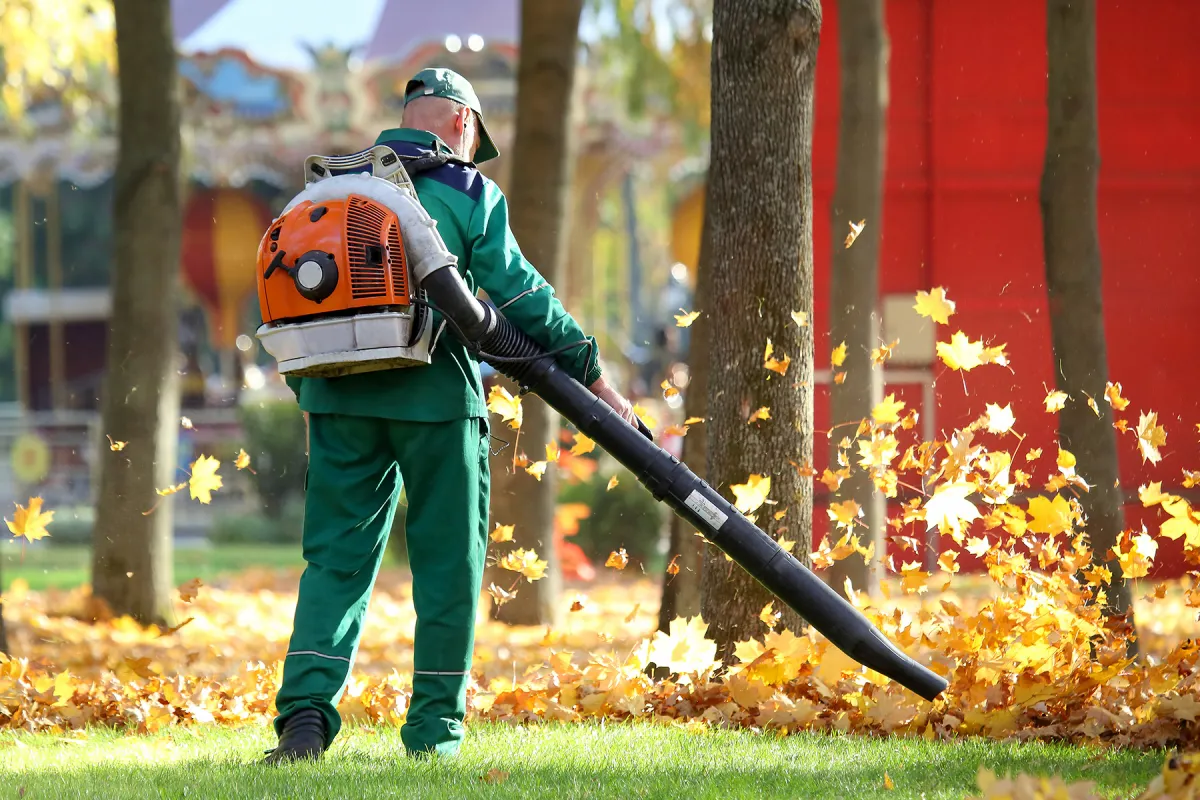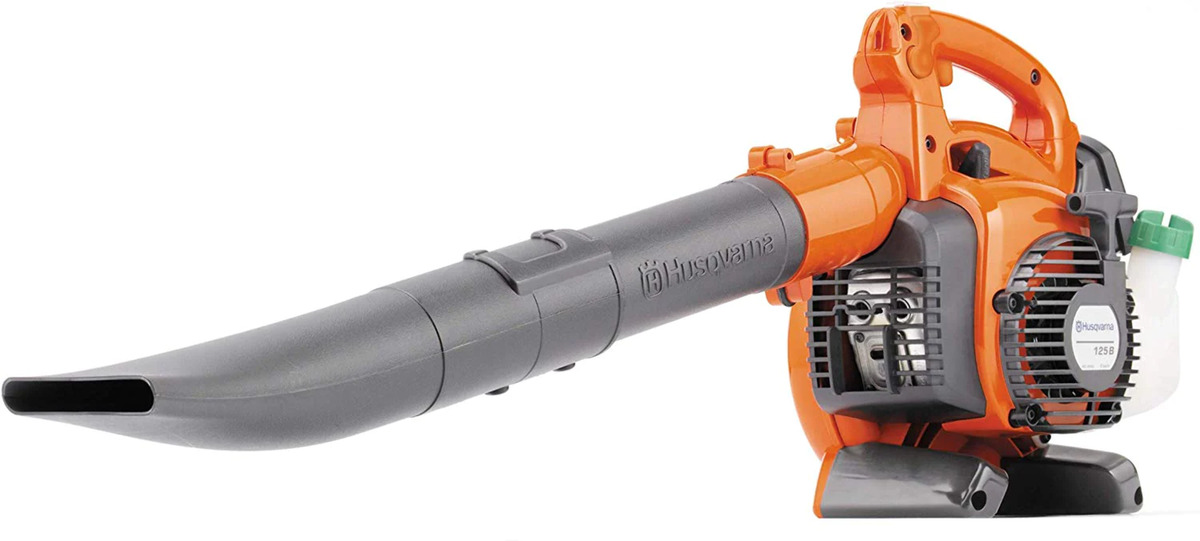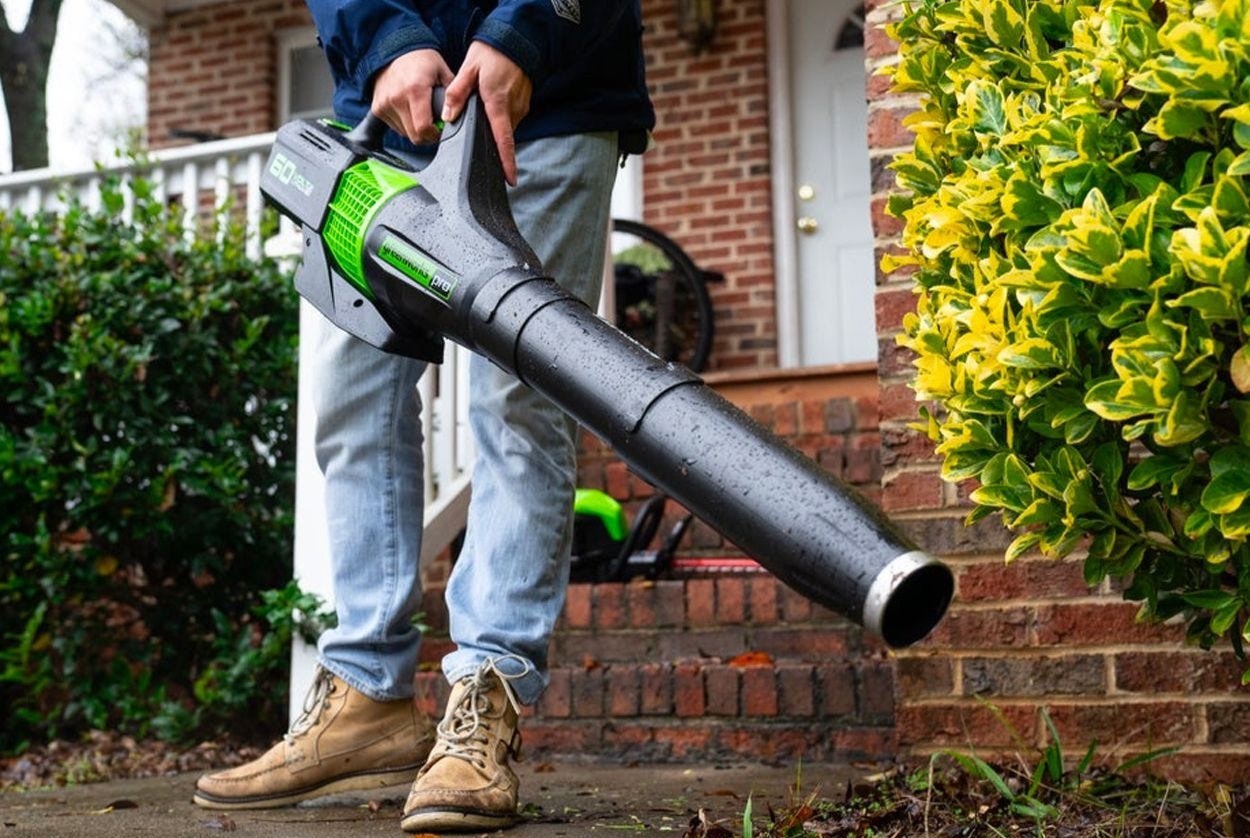Home>Gardening & Outdoor>Garden Tools & Equipment>What Type Of Oil To Mix With Gas For A Leaf Blower


Garden Tools & Equipment
What Type Of Oil To Mix With Gas For A Leaf Blower
Modified: January 14, 2024
Discover the best oil to mix with gas for your leaf blower. Get expert tips on maintaining garden tools and equipment for optimal performance.
(Many of the links in this article redirect to a specific reviewed product. Your purchase of these products through affiliate links helps to generate commission for Storables.com, at no extra cost. Learn more)
Introduction
Are you the proud owner of a leaf blower, ready to tackle those autumn leaves with ease? If so, you might be wondering about the best type of oil to mix with gas for your leaf blower. This essential maintenance task ensures that your leaf blower operates at peak performance, making yard work a breeze. In this comprehensive guide, we will delve into the nuances of oil-to-gas ratios, the types of oil suitable for leaf blowers, and the process of mixing oil and gas. By the end of this article, you will have a clear understanding of how to select the right oil for your leaf blower and achieve optimal results. Let's embark on this journey to demystify the world of leaf blower maintenance and unleash the full potential of your outdoor power equipment.
Key Takeaways:
- Choose the right oil for your leaf blower by following the manufacturer’s recommendations and considering factors like operating conditions, warranty, and personal preferences.
- When mixing oil and gas for your leaf blower, always use the correct ratio, a measuring container, and ensure thorough mixing for optimal engine performance.
Read more: What Kind Of Gas For A Leaf Blower
Understanding the Oil-to-Gas Ratio
When it comes to maintaining your leaf blower, understanding the oil-to-gas ratio is crucial. This ratio refers to the proportion of oil to gasoline that is mixed together to fuel two-stroke engines, which are commonly found in leaf blowers. The standard oil-to-gas ratio for most two-stroke engines is 50:1, meaning 50 parts of gasoline to 1 part of oil. However, it is important to consult your leaf blower’s manual to confirm the manufacturer’s recommended ratio, as it can vary depending on the specific model.
By adhering to the correct oil-to-gas ratio, you ensure proper lubrication of the engine’s internal components, which is essential for preventing excessive wear and maintaining optimal performance. Using an incorrect ratio can lead to inadequate lubrication, potentially causing engine damage and reduced efficiency. Therefore, it is imperative to follow the manufacturer’s guidelines to guarantee the longevity and reliability of your leaf blower.
Now that we’ve established the significance of the oil-to-gas ratio, let’s explore the types of oil that are suitable for use in leaf blowers.
Types of Oil Suitable for Leaf Blower
When it comes to selecting the right oil for your leaf blower, it’s essential to choose a high-quality two-stroke oil specifically designed for air-cooled engines. These oils are formulated to provide the necessary lubrication and protection for the engine’s moving parts while being able to mix effectively with gasoline.
There are two primary types of two-stroke oil suitable for leaf blowers: conventional and synthetic. Conventional two-stroke oil, also known as mineral oil, is derived from crude oil and is a cost-effective option for general use. It provides adequate lubrication and protection for the engine, making it a popular choice among homeowners and professionals alike.
On the other hand, synthetic two-stroke oil is engineered using advanced chemical processes to create a high-performance lubricant. Synthetic oils offer several advantages, including enhanced engine protection, reduced exhaust smoke, and improved lubrication at high operating temperatures. While synthetic oils generally come at a higher price point, they are ideal for demanding applications and can contribute to extending the lifespan of your leaf blower.
It’s important to note that some manufacturers offer specially formulated two-stroke oils designed to meet the specific requirements of their leaf blowers. These oils may be recommended to ensure optimal performance and warranty compliance. Always refer to the leaf blower’s manual or the manufacturer’s guidelines to determine the recommended oil type for your particular model.
Now that we’ve covered the types of oil suitable for leaf blowers, let’s delve into the factors to consider when choosing the right oil for your specific leaf blower model.
Always use a high-quality 2-cycle oil specifically designed for small engines when mixing with gas for a leaf blower. Follow the manufacturer’s recommended oil to gas ratio for best performance and to prevent engine damage.
Choosing the Right Oil for Your Leaf Blower
Choosing the right oil for your leaf blower involves considering several factors to ensure optimal performance and longevity. Here are key considerations to keep in mind when selecting the appropriate oil for your specific leaf blower model:
- Manufacturer’s Recommendations: Always consult the leaf blower’s manual or the manufacturer’s guidelines to identify the recommended oil type and oil-to-gas ratio for your particular model. Adhering to the manufacturer’s specifications is crucial for maintaining warranty coverage and maximizing the lifespan of your equipment.
- Operating Conditions: Evaluate the typical operating conditions of your leaf blower. If you frequently use the equipment in demanding environments or during extended periods, a high-quality synthetic oil may offer superior protection and performance compared to conventional oil.
- Warranty Considerations: Some manufacturers specify the type of oil that must be used to maintain warranty coverage. Using a non-recommended oil can void the warranty, so it’s essential to follow the manufacturer’s guidelines to safeguard your investment.
- Environmental Impact: Synthetic oils are known for producing lower exhaust smoke and reducing environmental emissions compared to conventional oils. If environmental impact is a concern for you, opting for a synthetic oil may align with your sustainability goals.
- Personal Preferences: Consider your personal preferences and budget when choosing between conventional and synthetic oils. While synthetic oils offer advanced performance benefits, conventional oils provide reliable lubrication at a more affordable price point.
By carefully considering these factors and weighing the advantages of each oil type, you can make an informed decision that aligns with your leaf blower’s requirements and your individual preferences. Once you’ve selected the appropriate oil, the next step is to understand the process of mixing oil and gas for your leaf blower.
Mixing Oil and Gas for Leaf Blower
Now that you’ve identified the right type of oil for your leaf blower, it’s time to master the art of mixing oil and gas to fuel your equipment. Follow these steps to ensure a proper oil and gas mixture for your leaf blower:
- Choose the Correct Ratio: Refer to the leaf blower’s manual or the manufacturer’s guidelines to determine the recommended oil-to-gas ratio for your specific model. The most common ratio for two-stroke engines is 50:1, but it’s essential to verify the precise ratio to avoid potential engine damage.
- Use a Measuring Container: To achieve the accurate oil-to-gas ratio, use a dedicated measuring container designed for mixing two-stroke fuel. These containers are marked with ratios for easy and precise measurement.
- Measure the Oil: Pour the appropriate amount of two-stroke oil into the measuring container based on the recommended ratio for your leaf blower. Ensure that the container is clean and free from any contaminants to prevent impurities from entering the fuel mixture.
- Add the Gasoline: Once the oil is in the measuring container, add the corresponding amount of gasoline to achieve the desired oil-to-gas ratio. Use fresh, unleaded gasoline with the octane rating recommended by the manufacturer.
- Thoroughly Mix the Mixture: Secure the container and shake it vigorously to thoroughly blend the oil and gasoline. Proper mixing is essential to ensure that the oil is uniformly distributed in the gasoline, providing consistent lubrication for the engine.
- Fill the Leaf Blower’s Tank: With the oil and gas mixture prepared, carefully pour it into the leaf blower’s fuel tank. Avoid spilling any fuel, and ensure that the tank’s cap is securely tightened to prevent leaks.
- Store Any Remaining Mixture Properly: If there is any leftover oil and gas mixture, store it in a sealed, labeled container in a cool, dry place away from direct sunlight and sources of heat.
Following these steps will help you create a well-balanced oil and gas mixture that meets the specific requirements of your leaf blower, ensuring smooth operation and reliable performance. With the fuel tank filled, your leaf blower is ready to tackle the task at hand, whether it’s clearing leaves, debris, or grass clippings.
Now that you have a comprehensive understanding of mixing oil and gas for your leaf blower, let’s summarize the key points and conclude our exploration of this essential maintenance practice.
Read more: What Kind Of Gas For An Echo Leaf Blower
Conclusion
Congratulations! You’ve journeyed through the intricacies of selecting the right oil for your leaf blower, understanding the oil-to-gas ratio, and mastering the art of mixing oil and gas. By gaining a deeper understanding of these fundamental aspects of leaf blower maintenance, you are now equipped to ensure the optimal performance and longevity of your outdoor power equipment.
Remember, the oil-to-gas ratio is the lifeblood of your leaf blower’s engine, providing essential lubrication and protection. Always consult the manufacturer’s recommendations to determine the correct ratio for your specific model, as using an improper ratio can lead to engine damage and diminished performance.
When it comes to choosing the right oil for your leaf blower, consider factors such as operating conditions, warranty requirements, environmental impact, and personal preferences. Whether you opt for conventional or synthetic oil, prioritizing high-quality, engine-specific two-stroke oil is key to ensuring reliable operation and minimizing wear and tear on your equipment.
As you embark on the journey of mixing oil and gas for your leaf blower, follow the precise steps outlined to create a well-balanced fuel mixture. Paying attention to the correct ratio, utilizing a dedicated measuring container, and ensuring thorough mixing will result in a consistent and effective fuel blend for your leaf blower’s engine.
With your leaf blower fueled by the optimal oil and gas mixture, you can confidently tackle outdoor tasks, from clearing leaves and debris to maintaining a pristine yard. By prioritizing proper maintenance and adhering to the manufacturer’s guidelines, you are investing in the long-term performance and reliability of your leaf blower.
Armed with this newfound knowledge, you are well-prepared to keep your leaf blower in top condition, ensuring that it remains a valuable ally in maintaining your outdoor spaces for years to come.
Frequently Asked Questions about What Type Of Oil To Mix With Gas For A Leaf Blower
Was this page helpful?
At Storables.com, we guarantee accurate and reliable information. Our content, validated by Expert Board Contributors, is crafted following stringent Editorial Policies. We're committed to providing you with well-researched, expert-backed insights for all your informational needs.















0 thoughts on “What Type Of Oil To Mix With Gas For A Leaf Blower”